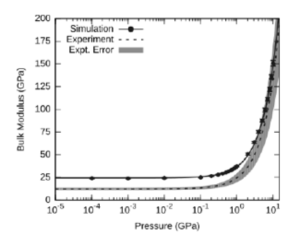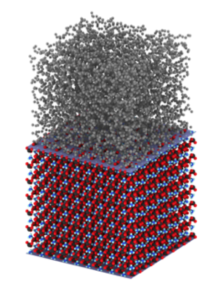Orthorhombic ammonium perchlorate (AP) is the most commonly utilized crystalline oxidizer in solid propellants and has been the subject of significant ongoing research efforts since the mid-20th century. Standard composite propellants utilized in defense applications typically contain 60-72% AP, up to 22% aluminum powder, and 8-16% polymeric binder; the role of AP as the primary oxidizer in rocketry applications has been the driving force behind much of the previous and ongoing research efforts related to the material. Despite the existence of a vast experimental literature for AP, only a few classical atomistic simulation studies of the material currently exist. Even these investigations are limited in scope and do not attempt to survey the underlying molecular phenomena present for pure crystalline
We have carried out extensive molecular dynamics simulations of the orthorhombic phase of AP. In this work (Garrett M. Tow and Edward J. Maginn, “Evaluating physical properties of the orthorhombic crystal phase of ammonium perchlorate using a class II force field”, Journal of Chemical Physics, 2018, 149, 244502) we computed a number of structural and dynamic properties of the AP crystal. The figure below shows a comparison of experimental and computed bulk modulus of AP.

The simulations overestimate the bulk modulus but the trend with pressure is captured. We are now working on a model to simulate AP in contact with the polymeric binder hydroxyl-terminated polybutadiene (HTPB). The image below shows a simulation of a layer of HTPB in contact with the crystalline face of AP.

Eliiseo Marin-Rimoldi is working on this project. This work is supported by the Air Force Office of Scientific Research under AFOSR grant FA9550-18-1-0321.
